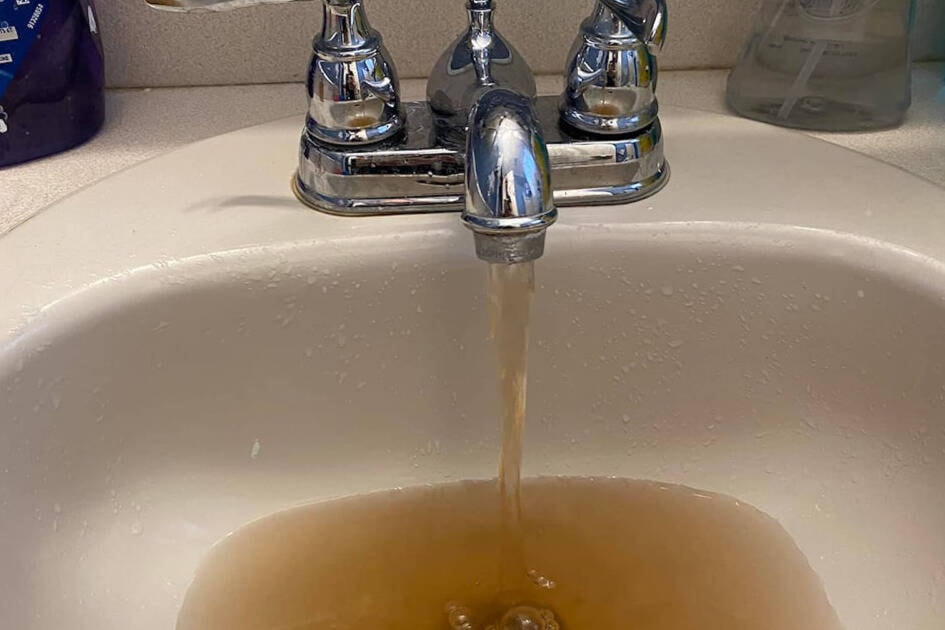Over the last few years, residents in Osoyoos have been plagued by water problems including deeply discoloured brown water, but that may only be the tip of the iceberg.
The Town’s council was presented with the annual water report on Jan. 9, and the information within is grim.
The two best wells, the ones that historically have had the least issues with the discolouring presence of manganese, have both seen their contamination levels skyrocket.
Since 2017, Well #3’s manganese levels have gone up 490 per cent, while Well #1 has gone up 1,340 per cent. Now all of the wells can cross over the aesthetic limit for manganese, the point where it can leave stains, while some cross the maximum allowed health limit.
The manganese causes a variety of issues, most obviously with the discolouration from it reacting to chlorine and a sludge mixed with iron on the inside of Well #3’s pump.
“It’s coming out at 650 gallons per minute right there,” said Kelly McDonald, the town’s utility superintendent. “So if you tried to flush and scour the lines, we couldn’t reach the velocity to remove that sludge.”
Ahead of the town’s planned water treatment plant, the water started getting tested for more than just the manganese. The town began testing for how much chlorination it might need as well as for other contaminants not regularly tested for by Interior Health.
What they found makes the water situation worse.
The testing results found levels of ammonia in Wells #3, #4, #5 and #8, with the levels in the latter three far exceeding allowable limits.
It was noted that testing of the lakewater found no ammonia, meaning that the contamination was limited to the aquifers Osoyoos’ wells tap into.
The testing also found the presence of organic carbons in the aquifers, which further reduce the effectiveness of the chlorination process.
Exploratory drilling and testing for two potential new wells found similar results to the existing wells.
The results of the testing have already had the town change its approach to dealing with how it chlorinates the water supply, injecting sodium hypochlorite at points along the system instead of attempting to do breakpoint chlorination at the source.
It was noted that reaching the breakpoint levels may have other issues at the moment given the contaminants in the system, creating levels of carcinogenic byproducts in halo acetic acids and trihalomethanes.
“They are proven and backed by law, they have a legislated maximum amount allowed in drinking water,” said McDonald. “In my opinion its a bit high and I have the feeling they’re going to lower that contaminant limit.”
After the discoveries, the town reached out to RESEAU Water and the University of BC in 2023 to bring a pilot water treatment trailer to test out treatment options, and set it up on Wells #4 and #5.
The town currently has $15.6 million in projects allocated in its 2024-2028 financial plan just for the water system, including the partially grant funded water treatment plant.
READ MORE: Brown water continues to plague Osoyoos residents
